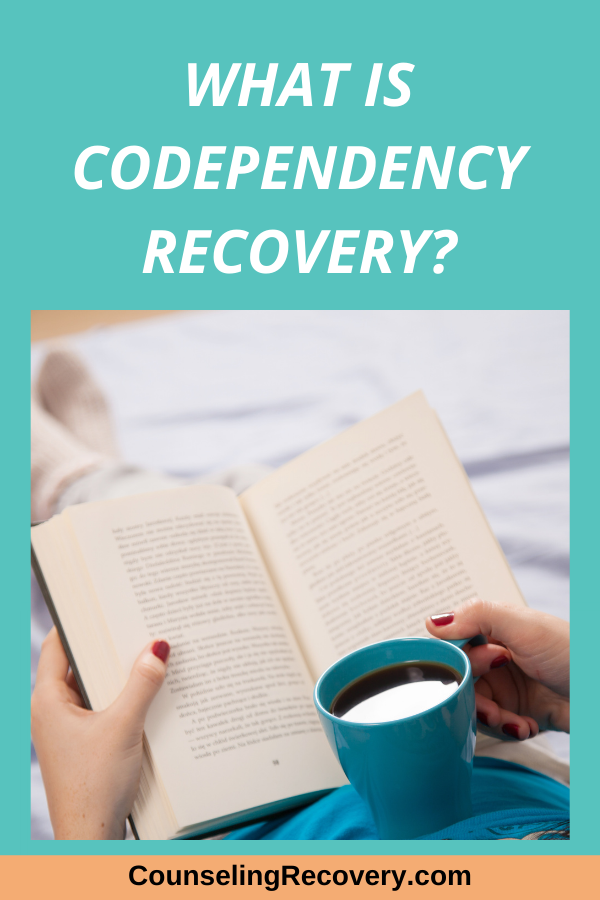What Is Codependency Recovery?
Codependency recovery is a complex process that many find confusing. You can’t complete it in a few short weeks. Codependent behaviors like people pleasing, neglecting self-care and not setting boundaries have lasting impacts on relationships, self-esteem, self-care and even our parenting.
Here is a simple definition for you.
Codependency develops when a person becomes overly focused on helping, rescuing or controlling others.
These tendencies develop as a way to cope with painful or abusive experiences in childhood.
Here’s what happens…
You learn to be the “good girl” or the “nice guy” in relationships. Control becomes a way to stay safe against potential abuse. Self-care gets replaced with taking care of others at your own expense.
Needless to say this causes a lot of pain and suffering!
Common codependent patterns include:
Pleasing others while neglecting yourself
Not being able to say no or set boundaries
Attracting people with problems like addicts and alcoholics
Avoiding anything that could lead to conflict
Struggling with perfectionism and unrealistic expectations
Having difficulty identifying and asking for what they need
As a result, you learn to get love in unhealthy ways. For instance, putting up with unacceptable behavior hoping to get the love you crave.
Eventually, the pain of these relationships becomes too intense and the codependent person realizes they need help. Click here to learn What is Codependency?
Admitting the need for help is the beginning of codependency recovery.
How Do You Start Healing Codependency?
Codependency recovery is a process of unlearning dysfunctional relationship behaviors that create imbalanced, toxic relationships. Although recovery is a lifelong process, there are some things you can do now to get relief.
Thanks to the internet, you can read tons of articles on the subject. Books like Codependent No More by Melody Beattie are considered a must read for anyone struggling with codependency.
You can also find online courses for self-study. These include video trainings, downloadable worksheets with some offering group support. These are a great way to start applying recovery principles right away.
But a self-education only goes so far…
What Gets in the Way of Codependency Recovery?
By nature codependents don’t like asking for help. They love being the giver but receiving is painful for them. They feel most valued when helping others or being the one with all of the answers.
Often it takes a relationship falling apart for them to finally seek help. Though lasting recovery requires not only self-study but a support system to guide you through the process.
How to Build Support for Codependency Recovery
12 step programs like Alanon or CODA offer free support and mentors called '“sponsors” to help you work the program.
Every meeting has a different flavor - it’s recommended to try at least six different meetings before making a decision. Some meetings focus on the literature while others have a speaker format followed by group sharing.
You can “take what you like and leave the rest” which means take what’s helpful and ignore what isn’t.
If you prefer something more private, hire a coach or therapist who specializes in codependency. Or, start your own group with others who are struggling too.
Don’t it alone because we can’t see our own blind spots.
The First Task of Codependency Recovery
Codependency recovery requires changing the focus. Instead of caring for others first, the codependent person needs to practice self-care.
Because their lives have revolved around fixing and rescuing others, this is not a small task. Recovery challenges their entire belief system since codependent people grow up believing that self-care means being selfish.
Prioritizing self-care means giving less to others but that doesn’t mean not giving. Doing things in moderation is codependency recovery.
Early recovery includes learning how to embrace difficult emotions. Because codependents are people pleasers, they typically hide their emotions - especially hurt and anger. Unfortunately, those emotions leak out in hurtful ways like guilt trips, or sarcastic comments.
Learning how to feel their own feelings instead of someone else’s marks a huge step towards growth. Sometimes this requires some professional help.
How to Start Healing Codependent Relationships
The second task is to assess the health of your relationships. Codependent relationships are naturally lop-sided with one person doing all the work while the other one becomes the one rescued or “fixed.”
Examples of codependent relationships include:
The active alcoholic and enabling spouse
The parent who still takes care of their adult child
The narcissistic person and the selfless codependent.
The friend who becomes too attached and drains the relationship.
Recovery is not for the weak.
Changing these patterns improves self-care, self-esteem and the quality of our relationships.
Grab my free journal prompts for healing codependency - click the image to sign up!
Family of Origin Work
The third task includes family of origin work - the bravest part of the journey. This means examining childhood wounds that created the codependent behavior in the first place.
Getting in touch with that pain takes tremendous courage especially when there has been abuse and neglect. Sometimes, people develop their own addictions that have numbed the pain.
The right support makes progress easier. Attending 12 step groups like Al-Anon and CODA offers amazing support. A therapist can provide confidential support as well as teach valuable coping strategies.
Final Thoughts
Recovery isn’t a linear process. You might find yourself working on more than one task at a time. That’s why recovery is not for the weak! Growth happens slowly over time. Codependents tend to overdo things, so the primary goal in codependency recovery is to learn how to take care of themselves and find balance.

